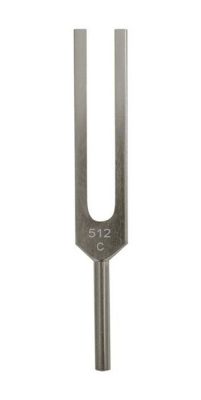Project Report For Tuning Forks
Introduction
Project Report for Tuning Forks is as follows.
A stem (handle) and two prongs that form a U-shaped fork are the components of tuning forks, which are typically made of aluminium (Figure 4-13). The tuning fork is used to test vibratory sensation and hearing (air conduction and bone conduction), vibrating at a specific frequency after being struck on the heel of the hand. By the stem, not the prongs, hold the tuning fork. There are many different frequencies of tuning forks (from 64 Hz to 4096 Hz), but 128 Hz is frequently used for screening.
The mastoid process is where the stem of the tuning fork—typically tuned to C2 = 512 Hz—is placed after it has been vibrated. When the patient can no longer hear the tone, they are instructed to report. The fork is then positioned on the same side, close to the concha, making sure the prongs are parallel to the axis of the ear canal.
The patient is questioned about whether they can still hear the tone. If this is the case, the test’s outcome is “positive,” denoting either that the patient has a sensorineural hearing loss or that their hearing on this side is normal. In the latter scenario, the times for bone conduction and air conduction are sped up, and the test’s outcome is characterised as “small positive.”

Uses Of Tuning Forks
- Vibrate the tuning fork: Hold the tuning fork by the base with two fingers. The two prongs should be facing each other. Then, tap one of the two prongs against your knee or hand. The prongs will start to vibrate. Do not strike the fork against a hard surface, such as a table. This could cause the prongs to break.
- Place the tuning fork base directly on the top of the head’s midline: You will hear the tuning fork sound in your head. If you are performing the test on yourself, note which side you hear the sound the loudest. If you’re testing someone else, ask them which side they hear the most loudly. This test determines which ear has superior hearing. If there is no discernible difference in the sound, both ears are hearing the same thing.
- Slide the tuning fork Slide the tuning fork to the side where you hear less noise: Slide the tuning fork towards the weaker side without removing it from the head or stopping its vibration. This determines the degree of hearing loss on that side. The closer you get, the less hearing you have in that ear. If you suspect you have hearing loss, schedule an appointment with your doctor as soon as possible.
Get Completely Custom Bankable Project Report
Market Potential for Tuning Forks
The tuning fork market is estimated to increase during the forecast period of 2021 to 2028. In the forecast period, the market is expected to reach a value of 3,220.96 USD million and increase at a CAGR of 5.22%.
The global market for medical tuning forks was sizeable in 2020, and between 2021 and 2028, it is anticipated to increase quickly. The favourable regulatory environment for medical tuning forks technology, rising orthopaedic injuries, and an ageing population at risk of hearing loss are key factors driving market revenue growth.
Given the availability of cutting-edge medical gadgets, the medical tuning fork market share from the clinics segment is projected to experience noticeable growth over the course of the projection year. Patients’ preferences for primary care and wellness checkups have recently migrated towards alternative healthcare facilities, such as retail clinics. A front door for patients to get medical care is also being created at other care facilities, such as urgent care facilities. Tuning fork consumption for use in medical testing will increase across clinics due to the quick installation of access points to address health concerns.

